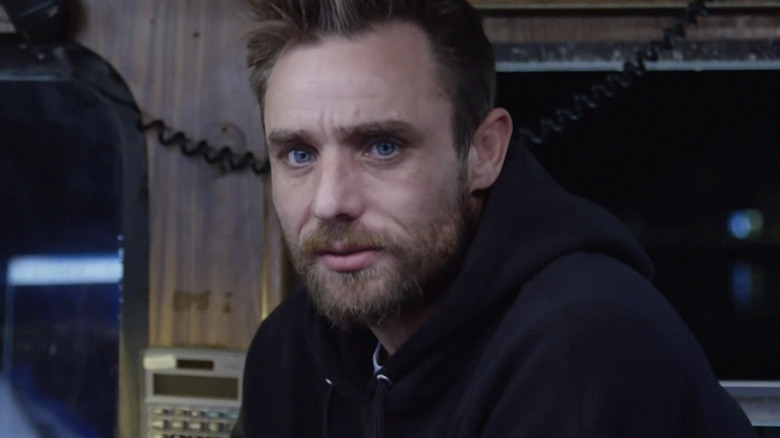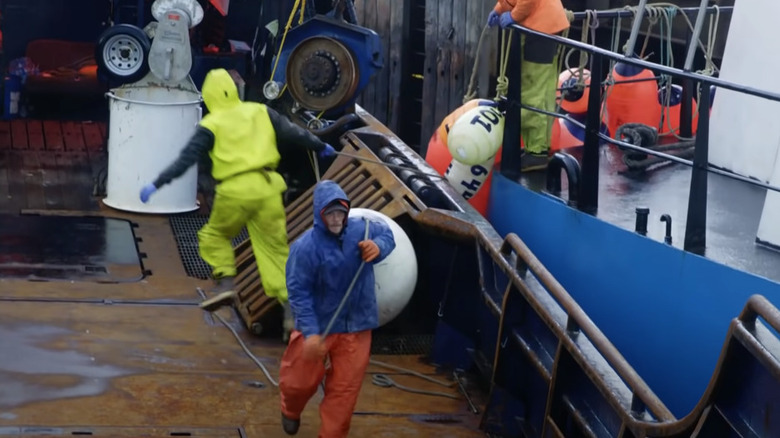How Deadliest Catch's Camera Crew Must Overcome Uncertainty To Succeed At Sea
For nearly 20 seasons, Discovery's "Deadliest Catch" has shown viewers the perilous conditions and operational challenges faced by crab fishermen in the icy waters of the Bering Sea off the coast of Alaska. But behind the scenes, the camera crews that capture the footage necessary to produce "Deadliest Catch" face their own set of difficult and often dangerous circumstances, threatening their equipment and health. In a 2020 interview with Gold Derby, Emmy-winning cinematographer David Reichert explained the logistical hazards that his crews face while filming in extreme conditions at sea.
"What we're doing is really all about the conditions," he said. "The Bering Sea, these giant waves, the cold, you know, the wet ... A big part of what we're doing is just trying to get these images in these conditions. We have to survive, our cameras have to survive," he continued, "because we are following the action. In this show, we just have to be there and be ready." Reichert explained that his crew frequently loses equipment to the cold salty water and they have even designed special weatherproof cameras for the show.
When crews leave port, they don't know how long they will be gone
David Reichert also explained that in addition to the extreme wear and tear on the camera equipment, the uncertainty of the fishing calendar makes filming "Deadliest Catch" difficult on camera crews in a different way. He said that when they begin filming a season, his crews have no way of knowing exactly how long they will be at sea.
"The crabbing season dictates everything," he said. "When they catch their quota, they come in." He said sometimes the fishing crews can sometimes meet their seasonal quotas in as little as two weeks, but other times it can take several months, and his crews have to be prepared for both ends of that extreme and everything in between.
He also explained that for crews used to shooting on sound stages and in other terrestrial settings, there is an adjustment period when shooting on a seafaring vessel. "It's a little nerve-wracking," he said. "It's just terrifying as you sail out of the harbor, and you just see the islands disappear over the horizon and you know you've got weeks before you see land again."

